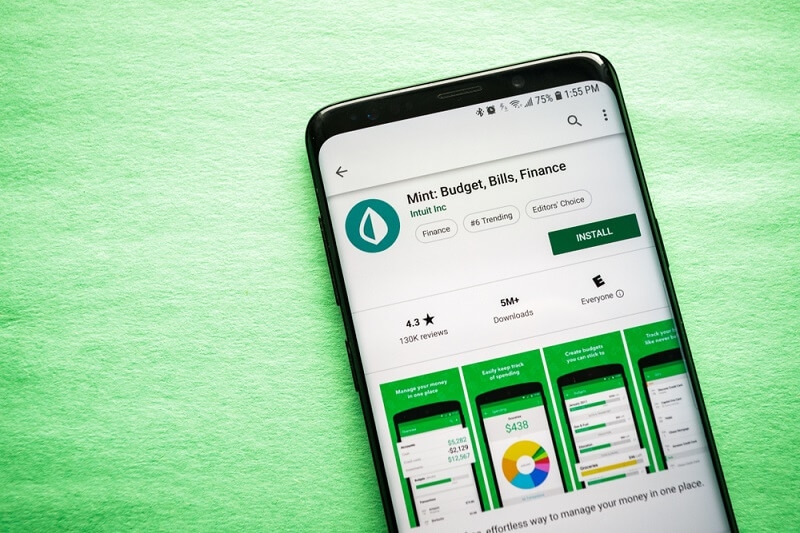
Personal budgeting has transformed from spreadsheets and notebooks to budgeting apps. Digital technology provides more innovative and secure ways to handle and manage our money, with budgeting apps leading the charge. Whether you are trying to keep track of spending, a couple planning to save for your goals, or a family managing common finances, there is a tool that will support you in budgeting without anxiety and provide real insight into your spending behavior.
In this article, you can expect comparisons of the top budgeting apps in the U.S.: features and user experience, with strengths and weaknesses, and the best-fit budgeting app recommendations based on user needs. We will explore budgeting apps by categories such as budgeting for families, tracking expenses apps in the U.S., or budgeting apps with bill reminders. In addition, we will strongly emphasize planning what budgeting apps present around security features to keep your financial information and data out of the hands of bad actors.
Budgeting apps offer digital solutions to make managing finances more manageable. Instead of estimating what you spend, these apps provide insight in real-time, automated features, and planning options that let users build their budgets and achieve financial goals.
Given the number of apps available, evaluating the best budgeting apps in the USA requires meaningful consideration of functionality and the relative user experience.
Before comparing budgeting apps individually, let's understand what differentiates a budgeting app. Here are the fundamental features that most users are looking for:
Track and classify transactions across linked bank accounts.
Establish spending limits by category (e.g., groceries, rent, objects, entertainment).
Automatic reminders for upcoming bills to avoid payment and late fees.
Syncing between the mobile, tablet, or desktop app for seamless control.
Sharing, collaborative access, or dashboards for couples or family households.
Encryption, biometric login security, and policies that do not sell your data are critical for peace of mind.
Overview:
YNAB uses a “zero-based budgeting” method to take a proactive approach to budgeting. It encourages users to assign every dollar a purpose and provides a detailed income breakdown vs. expenses.
Users who want total control over their finances and are committed to regular tracking.
Great for couples who want to collaborate on shared financial goals.
Uses bank-level encryption and does not store banking credentials.

Overview:
Mint has long been a popular choice for its user-friendly interface and wide range of features, most of which are free. It automatically imports transactions and categorizes them.
Beginners and casual users who want to understand their spending habits.
Yes—email and push notifications are available.
Limited customization for advanced budgeting needs.
Intuit backs multi-factor authentication and encryption.
Overview:
Goodbudget uses the envelope budgeting system—digitally. Instead of syncing with bank accounts, users manually enter income and expenses into different “envelopes” for categories.
Couples or families who want a shared budgeting method and prefer manual control.
Manual entry makes it highly customizable but time-intensive.
It does not link directly to bank accounts, reducing exposure to external breaches.
Overview:
PocketGuard focuses on helping users avoid overspending. It calculates how much is “safe to spend” after considering bills, goals, and necessities.
Individuals who tend to overspend and want proactive budgeting help.
Basic alerts are available; spending is prioritized over bill management.
Uses 256-bit SSL encryption and read-only bank access.
Overview:
Developed by Ramsey Solutions, EveryDollar offers zero-based budgeting with a strong emphasis on debt-free living and financial responsibility.
Fans of Dave Ramsey’s financial philosophy or those new to budgeting.
Manual is in the free version; automatic is in the paid version with a bank connection.
SSL and secure third-party integrations protect data.
Overview:
Honeydue is designed for couples who want to manage finances together. It supports shared transactions, comment threads, and bill reminders.
Couples managing joint or individual finances.
Yes—perfect for dual-budgeting households.
256-bit encryption; read-only access to financial data.
Overview:
Simplifi aims to modernize budgeting with a sleek UI and dynamic tracking tools. It provides a holistic view of spending, investments, and future cash flow.
Tech-savvy users who want a visual, personalized budget experience.
Yes, plus spending forecasts based on upcoming payments.
Bank-level security protocols, including biometric login.
Regarding budgeting apps for families, features like shared accounts, permission controls, and comment threads become especially valuable.
Whether you’re co-parenting, managing a household, or collaborating on savings goals, these apps provide collaborative features without compromising privacy or usability.
Late payments are costly and unnecessary. That’s why having a budgeting app with bill reminders is essential.
These reminders help users avoid late fees and maintain a solid credit history.
Data protection becomes a priority when connecting financial accounts. The best budgeting apps in the U.S. go above and beyond to ensure your financial information remains safe.
Apps that do not store credentials or allow write access reduce the risk of fraud or unauthorized activity.
In the digital world, there are countless tools available that will allow you to improve your financial life. Whether you are managing a paycheck alone or going through the process with a spouse, the apps presented in the comparison of the top budgeting apps in the U.S.: features and user experience will help you simplify, automate, and enhance how you spend and save money.
Whether you are looking for an expense tracking app in the U.S. or an advanced budgeting app with security features, the appropriate option is waiting. You can use the guide as an introduction to browse, compare, and safely select the tool that meets your financial well-being.
This content was created by AI